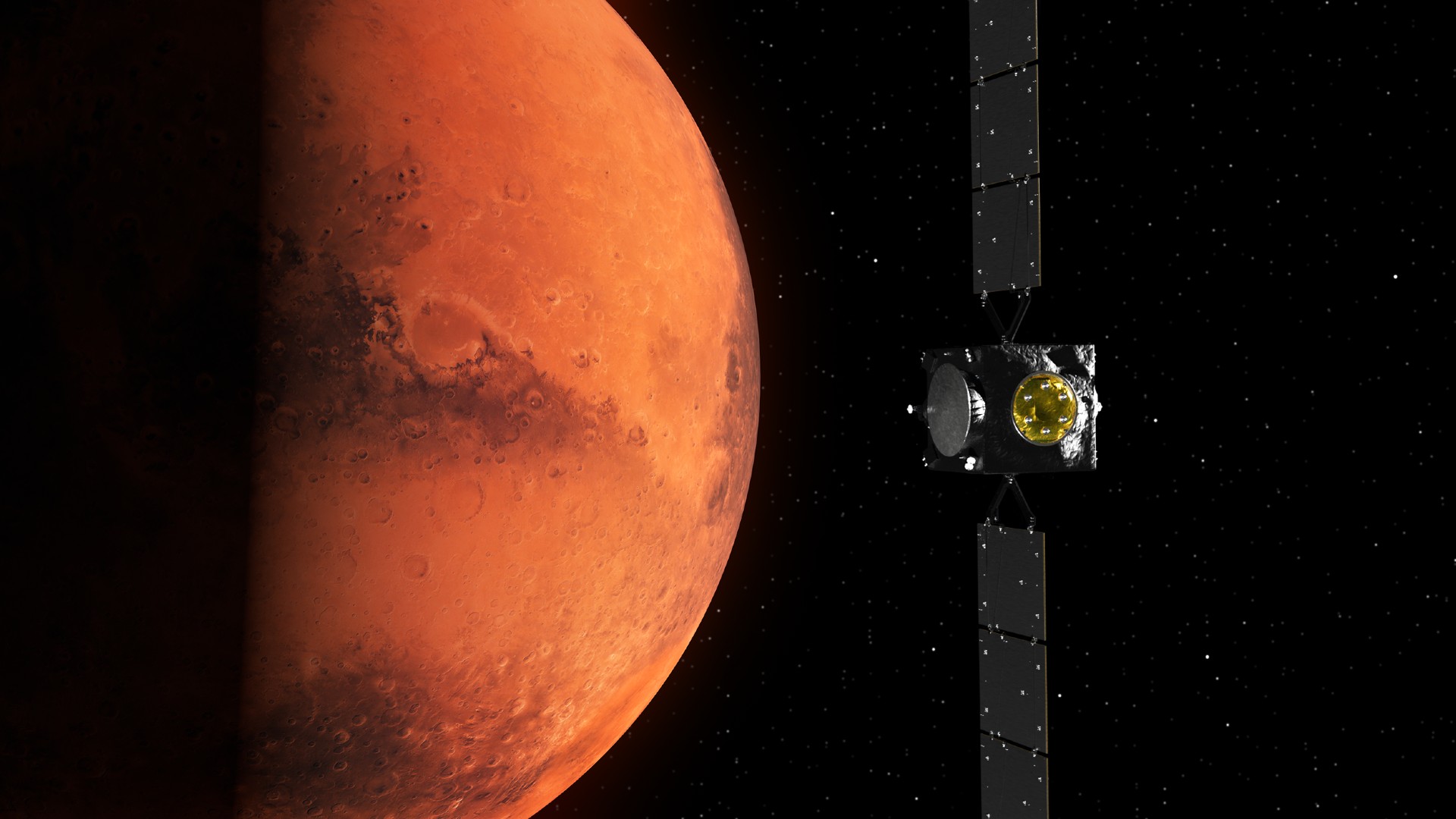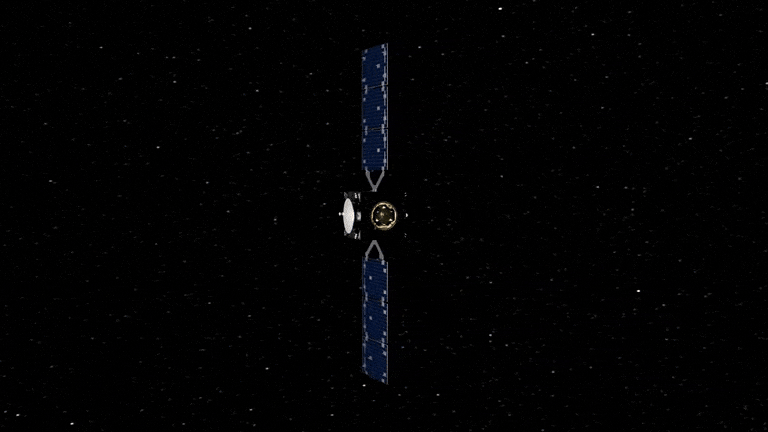The asteroid probe Hera has reached a crucial milestone on its journey to study the site of the first asteroid deflection test.
The European Space Agency (ESA) spacecraft fired its three orbital control thrusters for 13 minutes on Nov. 6, following an extended burn of 100 minutes on Oct. 23, the agency announced in a statement on Nov. 8.
Together, the maneuvers accelerated Hera by 544 feet per second (166 meters per second), putting the spacecraft on course to rendezvous with Mars in March 2025. It will use the Red Planet for gravitational support, accelerating Hera to its destination.
The Hera mission is on its way to the binary asteroid system Didymos. NASAs Double asteroid diversion mission (DART) collided with Didymos’ smaller companion, Dimorphos, in September 2022, and Hera will conduct critical follow-up research to find out how efficient the asteroid deflection impact really was.
“We are now analyzing Hera’s new trajectory after the second burn,” Francesco Castellini from ESOC’s Flight Dynamics team said in the ESA statement. “It seems to have gone very well. We will perform a much smaller correction maneuver of a few tens of centimeters on November 21 to refine the trajectory for the upcoming Mars flyby.”
The flyby will also be an opportune time for some bonus science. Hera’s trajectory will make it fly by Deimos and will train its scientific charges on the mysterious moon of Mars.

Hera launched on October 7 at a SpaceX Falcon 9 rocket from the Cape Canaveral Space Force Station. The spacecraft carries two cubesats, named Milani and Juventas, and will arrive at the Didymos system at the end of 2026.
Earlier this week, ESA released images showing what Hera is doing further and further away of the earth and the moon.
